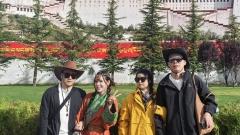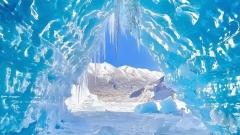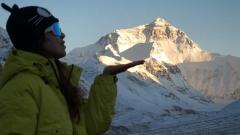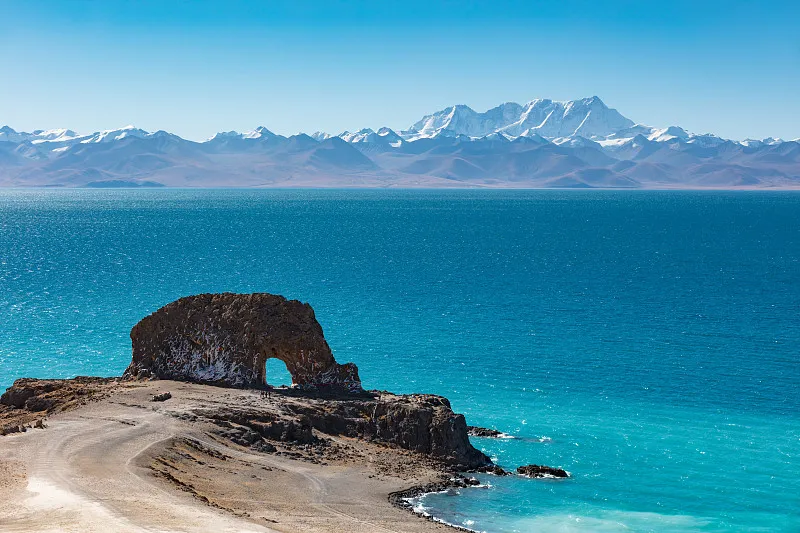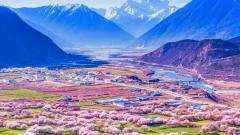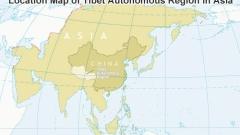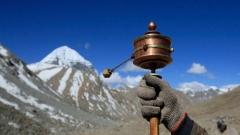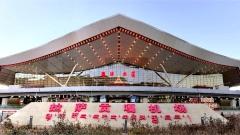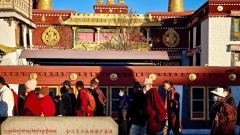Hidden in the far west of the Tibetan Plateau lies one of the world’s most remote and sacred travel destinations—Ngari (Ali) Prefecture. Often referred to as “the Roof of the World’s Roof,” Ngari is the spiritual heartland of Tibet, home to awe-inspiring landscapes, ancient civilizations, and revered pilgrimage sites like Mount Kailash and Lake Manasarovar.
However, traveling to Ngari is not like visiting any ordinary destination. With its extreme elevation, unpredictable climate, and rugged terrain, it presents both incredible beauty and significant challenges. If you’re considering a journey to Tibet’s wild west, this FAQ-style guide will help you understand everything from the best time to travel and how to get there, to what to pack, how to prepare, and how to stay safe and comfortable during your trip.
Can I Visit Ngari in the Year of the Horse?
Yes—and it’s highly recommended!
In the Year of the Horse, completing a Kailash Kora is considered especially auspicious. It is believed that one circumambulation in this holy year equals thirteen times in any ordinary year. Thousands of Tibetan pilgrims take this opportunity to walk the sacred path, creating a powerful spiritual atmosphere for travelers of all backgrounds.
If you’re planning a pilgrimage during the Year of the Horse, be prepared for:
- Crowds during festival periods (especially Saga Dawa Festival).
- High demand for permits and accommodations—book early!
When Is the Best Time to Visit Ngari?
Ngari is a land of eternal snowcaps and dramatic skies, and weather conditions can shift quickly, even within a day. The best time to travel to Ngari is from May to October, with May to June and September to October being the most favorable months.
- Spring (May–June): Clear skies, manageable temperatures, and perfect for photography and trekking.
- Summer (July–August): Warmer days, but also Tibet’s rainy season. Showers are usually brief and occur at night.
- Autumn (September–October): Golden landscapes, crisp air, and fewer crowds—ideal for pilgrimage and sightseeing.
Winter months (November–April) are not recommended due to extreme cold, snow-covered roads, and limited services.
How Can I Get to Ngari?
Option 1: Fly to Ngari
Ngari has one airport—Ngari Gunsa Airport (NGQ). You can take a domestic flight from:
- Lhasa Gonggar Airport (LXA)
- Urumqi Diwopu International Airport (URC)
- Kashi Laining International Airport (KHG)
Flying is fast, but due to the sudden jump in altitude (Ngari sits above 4,500 meters), acclimatization is a major concern. Flying directly is not recommended for first-time visitors to Tibet.
Option 2: Overland Journey
For most travelers, the preferred option is driving from Lhasa or Gyirong Port (Nepal border). These routes help the body gradually adapt to the altitude:
- Route from Lhasa: Follow Highway G318 and G219, passing through Shigatse and Saga.
- Route from Nepal: Enter Tibet through Gyirong Port, then continue along G219 toward Ngari.
These epic road trips take 3–6 days but are part of the experience, revealing stunning valleys, glacier views, and local life along the way.
What Should I Eat While Traveling in Ngari?
Ngari is remote and sparsely populated, so food options are limited but available.
What’s Available:
- Sichuan-style restaurants: Common in towns like Shiquanhe and Purang, offering spicy stir-fries and noodles.
- Tibetan cuisine: Try butter tea, tsampa, dried yak meat, and sweet tea for energy and warmth.
- Simple staples: Instant noodles, dumplings, boiled eggs, and rice dishes.
Pro Tips:
- Bring some snacks or ready-to-eat food from Lhasa or your hometown—energy bars, chocolate, nuts, biscuits, and fruits.
- Stay hydrated! Drink plenty of water to combat altitude sickness and dry weather.
Where Will I Stay in Ngari?
Set Your Expectations Low
Accommodation in Ngari ranges from basic guesthouses to simple hotels, with few offering hot water or private bathrooms.
Main Towns:
- Shiquanhe (Ali’s capital): Has the best hotel options, some with hot showers.
- Darchen (near Mount Kailash): Basic hotels and dormitories. A few may offer hot showers in peak season.
- Along the Kora route: Basic guesthouses or dorms, with shared toilets and very limited amenities.
Pro Tips:
- Carry a sleeping bag or liner, especially if you’re visiting during the peak or off-season.
- Book in advance during high season (May–October), especially around Saga Dawa Festival (Year of the Horse or other holy years).
What Should I Pack for a Ngari Trip?
Packing wisely is essential for high-altitude travel. Ngari’s harsh weather, long drives, and limited resources mean that being prepared makes all the difference. Essentials to Pack:
- Layered clothing: Quick-dry base layers, fleece, thermal underwear, windproof and waterproof outerwear.
- Winter accessories: Gloves, beanie, scarf.
- Sun protection: Sunglasses, SPF50+ sunscreen, lip balm.
- Trekking shoes: Waterproof and broken-in.
- Flashlight or headlamp: Power outages are common.
- Medicine: Ibuprofen, altitude sickness pills, cold remedies, and personal prescriptions.
- Reusable water bottle & purification tablets: Hydration is key.
- Snacks and dry food: Especially if you have dietary restrictions.
- Cash in small denominations: For donations, tips, and remote shopping.
Lighten your load during the Kailash Kora. You can hire a porter in Darchen or rest houses to carry bags.
How to Handle Money and Currency in Ngari?
While Ngari has limited banking infrastructure, you will still find:
- Postal Savings Bank of China (PSBC) and Agricultural Bank of China branches in bigger towns like Shiquanhe.
- ATM access may be unreliable, especially in smaller towns.
- Credit cards are rarely accepted, except in top hotels.
Our Tips:
- Exchange currency in Lhasa before heading west.
- Carry enough cash for the entire journey.
- Bring small bills for monastery donations or street-side purchases.
Is Internet Access Available in Ngari?
Yes, but it’s limited and slow. You may find:
- Basic Wi-Fi in hotels or cafes in Shiquanhe.
- No signal in remote areas or along the Mount Kailash Kora.
Even mobile data (3G/4G) is intermittent, especially on the northern route or within natural reserves.
Plan for digital detox—download maps, apps, and music before you go.
How to Prevent Altitude Sickness in Ngari?
Ngari’s average altitude exceeds 4,500 meters (14,763 ft). If you’re not already acclimated, symptoms like dizziness, fatigue, nausea, or shortness of breath can occur.
Prevention Tips:
- Do not fly directly to Ngari if it’s your first time in Tibet.
- Spend 2–3 days in Lhasa to adjust before continuing west.
- Walk slowly, don’t overexert, and rest often.
- Stay hydrated and avoid alcohol or smoking.
Helpful Supplies:
- Oxygen bottles or portable oxygen canisters.
- Hongjingtian (Rhodiola) or similar herbal supplements.
- Glucose, pain relievers, and altitude pills.
Emergency Measures:
If symptoms worsen, descend to lower altitude. Ngari has an airport, and most tour operators have emergency exit plans. Always travel with an experienced local guide.
What Makes Ngari a Special Destination?
Ngari is not just another highland—it is Tibet’s spiritual and historical core. Many of the holiest Tibetan Buddhist pilgrimage sites are located here:
Top Attractions in Ngari:
- Mount Kailash: The most sacred mountain for Buddhists, Hindus, Bon, and Jain followers. Pilgrims from all over the world come to complete the 3-day Kora (circumambulation) around its base.
- Lake Manasarovar: One of Tibet’s most beautiful lakes and considered a sacred water body for ritual bathing and reflection.
- Guge Kingdom Ruins: An ancient lost civilization surrounded by clay cliffs and layered temples—still a mystery to many.
- Zanda Earth Forest (Tulin): A surreal landscape carved by wind and erosion into natural castles.
- Rakshastal & Purang Valley: Alien-like terrain with deep religious meaning and views of Nepal’s Himalayas.
Do I Need a Border Permit to Travel to Ngari?
Yes, besides the Tibet Travel Permit, foreign travelers visiting Ngari must apply for a Border Permit due to its proximity to India and Nepal. How to Get It:
- Apply via a licensed Tibet travel agency (e.g., China Dragon Travel).
- Processing takes 3–5 working days, so plan ahead.
- Must be presented at checkpoints on the way to Mount Kailash and Lake Manasarovar.
Why Choose China Dragon Travel to Start Your Ngari Travel?
At China Dragon Travel, we understand that a journey to Ngari is not just a trip—it’s a profound personal and spiritual experience. That’s why we provide:
- Custom Ngari itineraries tailored to your pace, interests, and acclimatization needs.
- Expert local guides who speak English and know Ngari like the back of their hands.
- Full logistics support, including permits, private transportation (4×4), accommodation, and meals.
- Emergency planning and oxygen support for high-altitude safety.
- Spiritual guidance for pilgrims who want to complete the sacred Kailash Kora during the Year of the Horse or any time.
Let us take care of the challenges so you can fully immerse yourself in the mystical landscapes, sacred mountains, and timeless culture of Tibet’s last frontier.



